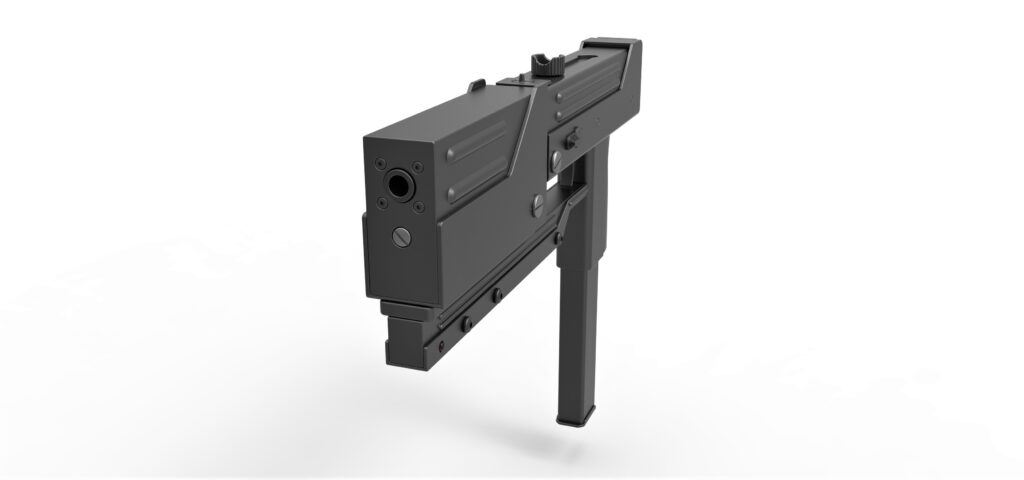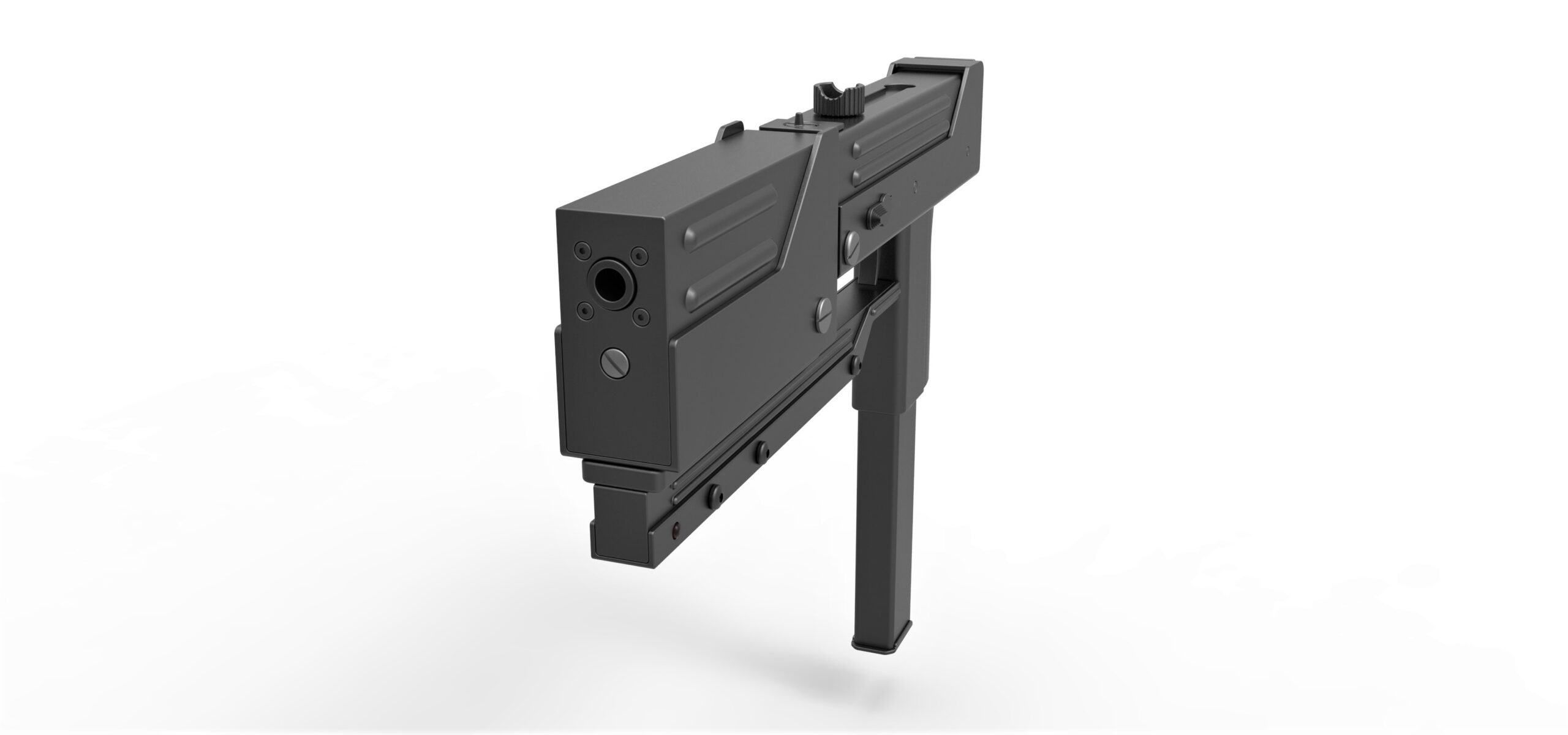
MAC-11 vs MAC-10: Unraveling the Submachine Gun Showdown
The world of firearms is filled with iconic designs, each with its own history, purpose, and following. Among these, the MAC-10 and MAC-11 submachine guns hold a unique, albeit controversial, place. Often associated with clandestine operations, law enforcement, and even popular culture, these compact weapons have garnered both fascination and notoriety. This article delves into a detailed MAC-11 vs MAC-10 comparison, exploring their origins, design features, performance characteristics, and their impact on the firearms landscape. Understanding the nuances between the MAC-10 and the MAC-11 requires a look at their individual developments and how they differ in practical application.
The Genesis of the MAC Series
To truly understand the MAC-10 and MAC-11, it’s crucial to understand the context in which they were created. Both firearms were the brainchild of Gordon Ingram, an American firearms designer who sought to create a compact, high-firepower weapon suitable for military and law enforcement use. Ingram’s earlier designs influenced his later work, culminating in the Military Armament Corporation (MAC) submachine guns.
Ingram’s Vision
Ingram envisioned a weapon that was easily concealable, simple to operate, and capable of delivering a high volume of fire. This led to the development of the MAC-10, originally chambered in .45 ACP, and later in 9mm. The MAC-10 was designed with a simple blowback operation, making it relatively inexpensive to manufacture and easy to maintain. Its compact size and high rate of fire made it attractive to special operations forces and law enforcement agencies seeking a close-quarters combat weapon. The subsequent development of the MAC-11 aimed to further refine this design, resulting in a smaller, more compact version.
Design and Specifications: A Detailed Comparison
While both the MAC-10 and MAC-11 share a common lineage, there are significant differences in their design and specifications that affect their performance and handling.
Size and Dimensions
The most obvious difference between the two is size. The MAC-11 is significantly smaller and lighter than the MAC-10. This reduction in size was achieved by shortening the barrel, receiver, and overall length of the weapon. The MAC-11’s compact dimensions make it even easier to conceal and maneuver in tight spaces. This enhanced concealability made the MAC-11 a popular choice for covert operations and personal defense, although its ballistic performance suffered somewhat due to the shorter barrel.
Caliber and Ammunition
The original MAC-10 was chambered in .45 ACP or 9mm, offering considerable stopping power. The MAC-11, on the other hand, is typically chambered in .380 ACP, a smaller and less powerful cartridge. While the .380 ACP offers reduced recoil and improved controllability, it also delivers less energy on target compared to the .45 ACP or 9mm rounds. This difference in caliber reflects the design priorities of each weapon: the MAC-10 prioritized stopping power, while the MAC-11 emphasized concealability and ease of handling.
Rate of Fire
Both the MAC-10 and MAC-11 are known for their extremely high rates of fire. However, the MAC-11 typically has an even higher rate of fire than the MAC-10, often exceeding 1,200 rounds per minute. This blistering rate of fire, combined with its small size, makes the MAC-11 difficult to control in full-automatic mode. While the high rate of fire can be advantageous in certain close-quarters combat situations, it also leads to rapid ammunition consumption and reduced accuracy. The MAC-10, while still possessing a high rate of fire, is slightly more manageable due to its larger size and weight.
Operating Mechanism
Both the MAC-10 and MAC-11 utilize a simple blowback operating system. This design is relatively inexpensive to manufacture and easy to maintain, but it also contributes to the weapon’s high recoil and relatively poor accuracy. The blowback system relies on the force of the expanding gases from the fired cartridge to cycle the action, ejecting the spent casing and loading a new round. While this system is reliable, it is less efficient than other operating systems, such as gas-operated or recoil-operated systems. The simplicity of the blowback system was a key factor in the MAC-10’s and MAC-11’s affordability and ease of production.
Performance and Handling
The performance and handling characteristics of the MAC-10 and MAC-11 are largely determined by their design and specifications. The MAC-10’s larger size and more powerful caliber give it an advantage in terms of stopping power, while the MAC-11’s smaller size and lighter weight make it easier to conceal and maneuver. However, both weapons suffer from poor accuracy and controllability, particularly in full-automatic mode.
Accuracy and Controllability
Due to their short barrels, simple sights, and high rates of fire, neither the MAC-10 nor the MAC-11 is known for its accuracy. In full-automatic mode, it can be difficult to keep the weapon on target, especially at longer ranges. The MAC-11, with its even higher rate of fire and smaller size, is particularly challenging to control. Experienced shooters can achieve acceptable accuracy with both weapons through careful trigger control and short bursts of fire, but they are not ideal for precision shooting.
Recoil Management
The MAC-10, chambered in .45 ACP or 9mm, produces significant recoil, especially in full-automatic mode. The MAC-11, chambered in .380 ACP, has less recoil, making it somewhat easier to control. However, the MAC-11’s high rate of fire can still make it challenging to manage the recoil effectively. Shooters often employ techniques such as bracing the weapon against their body or using a two-handed grip to mitigate the effects of recoil. The development of aftermarket accessories, such as foregrips and stocks, has also helped to improve recoil management.
Effective Range
The effective range of both the MAC-10 and MAC-11 is relatively short, typically limited to 50 meters or less. Beyond this range, accuracy drops off significantly. The MAC-10’s more powerful caliber gives it a slight advantage in terms of effective range, but both weapons are primarily intended for close-quarters combat. Their compact size and high rate of fire make them well-suited for engaging targets at close range, but they are not effective for long-range engagements.
The MAC-10 and MAC-11 in Popular Culture and Law Enforcement
The MAC-10 and MAC-11 have had a significant impact on popular culture, appearing in numerous films, television shows, and video games. Their association with criminals and special operations forces has contributed to their mystique and notoriety. In law enforcement, the MAC-10 and MAC-11 have been used by various agencies for close-quarters combat and special operations. However, their high rate of fire and limited accuracy have also raised concerns about their suitability for certain law enforcement applications.
Cultural Impact
The MAC-10 and MAC-11 have become iconic symbols of urban warfare and criminal activity in popular culture. Their frequent appearances in action movies and video games have cemented their image as powerful and dangerous weapons. While this portrayal is often exaggerated, it reflects the real-world reputation of these firearms as compact and high-firepower weapons. The MAC-10’s and MAC-11’s cultural impact has contributed to their continued fascination and notoriety.
Law Enforcement Use
The MAC-10 and MAC-11 have been used by various law enforcement agencies for specific purposes, such as close-quarters combat and special operations. Their compact size and high rate of fire make them suitable for engaging targets in confined spaces. However, their limited accuracy and controllability have also raised concerns about their potential for collateral damage. Some law enforcement agencies have opted for more modern and accurate submachine guns, while others continue to use the MAC-10 and MAC-11 in specialized roles. [See also: Modern Submachine Gun Technology]
The Legal Landscape
The legal status of the MAC-10 and MAC-11 varies depending on the jurisdiction. In the United States, both weapons are subject to the National Firearms Act (NFA), which regulates the ownership and transfer of machine guns. Civilian ownership of the MAC-10 and MAC-11 is generally restricted to pre-1986 models that were registered with the Bureau of Alcohol, Tobacco, Firearms and Explosives (ATF) prior to the NFA’s amendment in 1986. These registered machine guns are highly regulated and require extensive paperwork and background checks to own and transfer. Post-1986 MAC-10s and MAC-11s are generally prohibited from civilian ownership. [See also: Gun Control Legislation]. State and local laws may also impose additional restrictions on the ownership and possession of these firearms. It is crucial to consult with legal experts to ensure compliance with all applicable laws and regulations.
Conclusion: Weighing the Pros and Cons
The MAC-10 and MAC-11 are iconic submachine guns with a rich history and a controversial reputation. While both weapons share a common lineage, they differ significantly in terms of size, caliber, and performance. The MAC-10 offers more stopping power, while the MAC-11 is more compact and concealable. However, both weapons suffer from poor accuracy and controllability, particularly in full-automatic mode. Ultimately, the choice between the MAC-10 and MAC-11 depends on the specific needs and priorities of the user. Whether for historical interest, collecting, or specialized applications, these firearms continue to fascinate and intrigue enthusiasts and professionals alike. Understanding the nuances of the MAC-11 vs MAC-10 debate provides valuable insight into the evolution of submachine gun design and their role in both military and civilian contexts.

